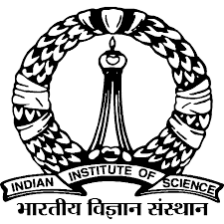Computational studies of protein packing and stability
Residue Depth:
Accessible surface area is a parameter that is widely
used in analyses of protein structure and stability. However accessible surface
area does not distinguish between atoms just below the protein surface and
those in the core of the protein. In order to differentiate between such buried
residues, we have described a computational procedure for calculating the depth
of a residue from the protein surface. We have developed a computer program for
depth calculations that is available upon request.
The depth program can be
accessed at the Residue depth server http://cospi.iiserpune.ac.in/depth/
and is currently being developed by Prof MS Madhusudhan’s lab at IISER Pune.
Residue depth correlates significantly better than accessibility with effects
of mutations on protein stability and on protein-protein interactions.
Cavity Volumes:
Interior cavities in a macromolecular structure are potentially destabilizing. Exterior concavities are potential binding sites. The depth algorithm has been extended to develop a procedure for accurate calculation of cavity volumes and surface concavities in proteins and is also available on the server above. An alternative procedure for quantitating volumes of interior cavities and surface pockets using hydrated MD simulations was also developed. These calculations, along with existing thermodynamic data on stabilities of cavity containing mutants, have been used by us to obtain an estimate of the strength of the hydrophobic driving force in protein folding.
Ts and Cs mutants:
A computational procedure to predict both temperature sensitive and cold sensitive (Ts and Cs) mutants of a protein from the amino acid sequence was developed by us. The procedure predicts known Ts mutants in several proteins and an improved version has now been encoded in the form of a server that is available at http://cospi.iiserpune.ac.in/TSpred/ .
Protein Stability and Disulfide design:
In a longstanding collaboration with the late Prof C.
Ramakrishnan we developed improved algorithms for disulfide design as
well as criteria for substitution/introduction of Pro residues in proteins. We
have also carried out comparative analyses of sequences and structures of
proteins from thermophiles and mesophiles in an effort to elucidate
determinants of protein thermostability.
